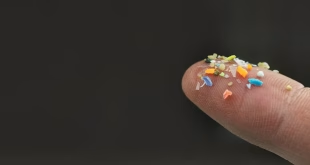GS 3 – ENVIRONMENT

Context: Researchers are exploring bacterial and microbial approaches to break down plastic waste, offering a potential solution to environmental pollution.
Plastic-Degrading Bacteria and Enzymes
Certain microbes can biodegrade plastics within months by enzymatically breaking them down into carbon dioxide, water, and biomass. For instance, PET plastic can degrade in 22 months, while advanced enzymes have been shown to break down 90% of PET in just 17 hours.
- Ideonella sakaiensis: A bacterium identified for its ability to decompose PET plastic using two key enzymes:
- PETase: Initiates the breakdown of PET.
- MHETase: Further degrades PET into terephthalic acid and ethylene glycol.
Microbial Solutions for Different Plastic Types
- Polyethylene Terephthalate (PET): Found in bottles and packaging, effectively degraded by Ideonella sakaiensis.
- Polyolefins & Polyamides: More resistant plastics, which can be broken down by bacteria like X-32, known for degrading complex plastic bonds.
Technological Innovations
- Enzyme Engineering: Scientists are modifying enzymes to enhance plastic degradation speed for large-scale use. For example, Carbios has developed a heat-stable enzyme that accelerates degradation.
- Bacterial Spore-Infused Plastics: Bacillus subtilis spores can be embedded in thermoplastics, allowing degradation under composting conditions.
Challenges in Implementing Microbial Solutions
- Scaling Up Production: Expanding microbial and enzyme-based plastic breakdown for industrial applications remains a significant challenge.
- Bioreactor Development: Creating controlled environments to optimize and speed up microbial degradation at large scales.
- Enzyme Purification & Efficiency: Extracting and mass-producing effective enzymes remains technically complex.
- Degradation Speed: To be economically viable, microbes and enzymes must break down plastics at a commercially feasible rate.
 Chinmaya IAS Academy – Current Affairs Chinmaya IAS Academy – Current Affairs
Chinmaya IAS Academy – Current Affairs Chinmaya IAS Academy – Current Affairs



